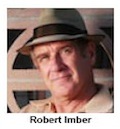
As a Midwestern-born Palm Springs resident, I’m humored when I hear “the desert has no seasons”.
Sure we do.
 Doesn’t autumn start when we replace shorts with long pants? I’m fairly certain winter arrives when it’s just too cold to put down the top on our convertibles.
Doesn’t autumn start when we replace shorts with long pants? I’m fairly certain winter arrives when it’s just too cold to put down the top on our convertibles.
I’m happy to welcome November knowing I’ll have no snow to shovel, but the California desert transforms each fall as surely as New England’s foliage reveals its orange and golden splendor.
Each season, I await the desert landscape sharing its mystical restorative lessons as it awakens from a summer slumber.
In any climate, good planning and design account for environmental conditions and ecological soundness, so it stands to reason desert modernism responded to natural regional stimuli.
The relationship of buildings to their location in the open desert and surrounding mountain vistas dictated materials and siting choices…sometimes dramatic, always practical.
Architect Albert Frey’s 1947 home for industrial designer Raymond Loewy brought the swimming pool into the living room. Frey’s own mountainside residence is mostly glass built around a giant boulder, yet both homes function acutely aware of the climate in which they thrive.
Throughout the Coachella Valley, residential and commercial building’s deep roof overhangs under elongated eaves protect from the sun, while on cooler days capture warmth to radiate into the buildings, often through glass walls.
Ever notice an older house that today may stand on a street oriented differently from neighboring buildings?
See if logic doesn’t tell you it was built long before surrounding development after careful observation of the passing sun to ensure optimum lighting, maximum cool or warmth. Design elements such as pierced screen walls and woven decorative concrete block can serve a variety of purposes: privacy, security, light and ventilation, for example.
At Palm Springs City Hall, sheet metal and rebar Brise-Soleil (sun screens) are a distinctive characteristic providing view, ventilation, and sun protection as well as passive solar heating.
Modernist Richard Neutra’s purposeful climate-minded elements are inherent in his entire life’s works. At Palms Springs Kaufmann House, his louvered aluminum screens can protect from or invite in the western sun.
In “Survival Through Design” (1954), Neutra recounts a collection of essays explaining the connection between human biology and the constructed elements of architecture and its materials.
Atriums and open passageways create an interrelationship with the site and its users…an aesthetic that may make any daily experience better.
Architecture has an effect on us.
Palm Springs resident Robert Imber is executive director of “Desert Utopia”, the documentary on Palm Springs modernism, a board member of the Palm Springs Modern Committee, and a trustee of The California Preservation Foundation, the state’s largest and oldest preservation organization. Imber operates Palm Springs Modern Tours, offering twice daily tours of Palm Springs mid-century modern architecture (www.palmspringsmoderntours.com).
Like what you're reading? Then "Like" us on Facebook and "follow" us on Twitter.